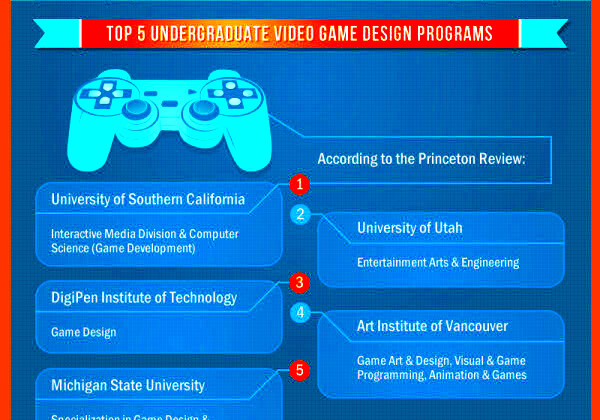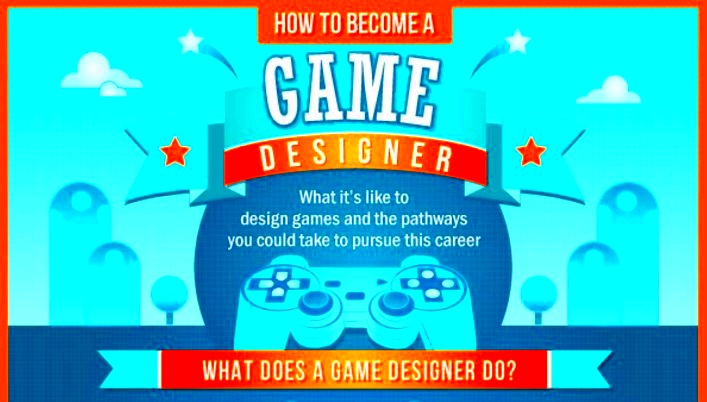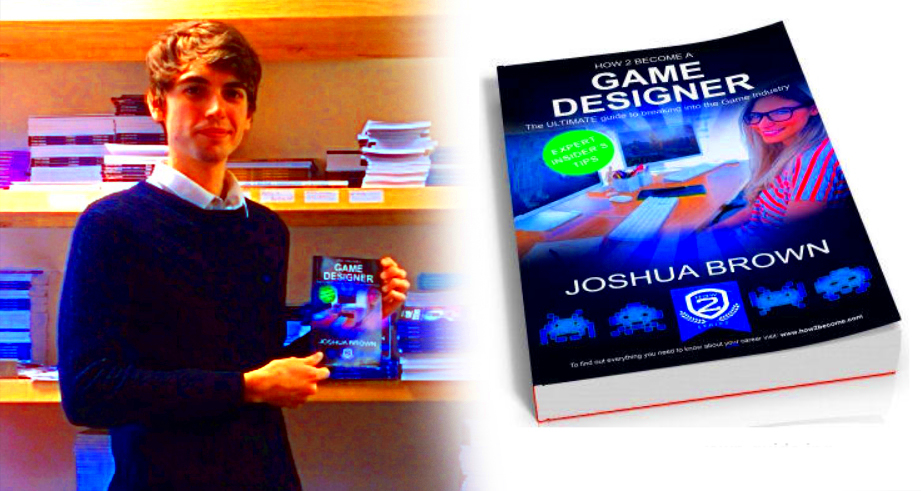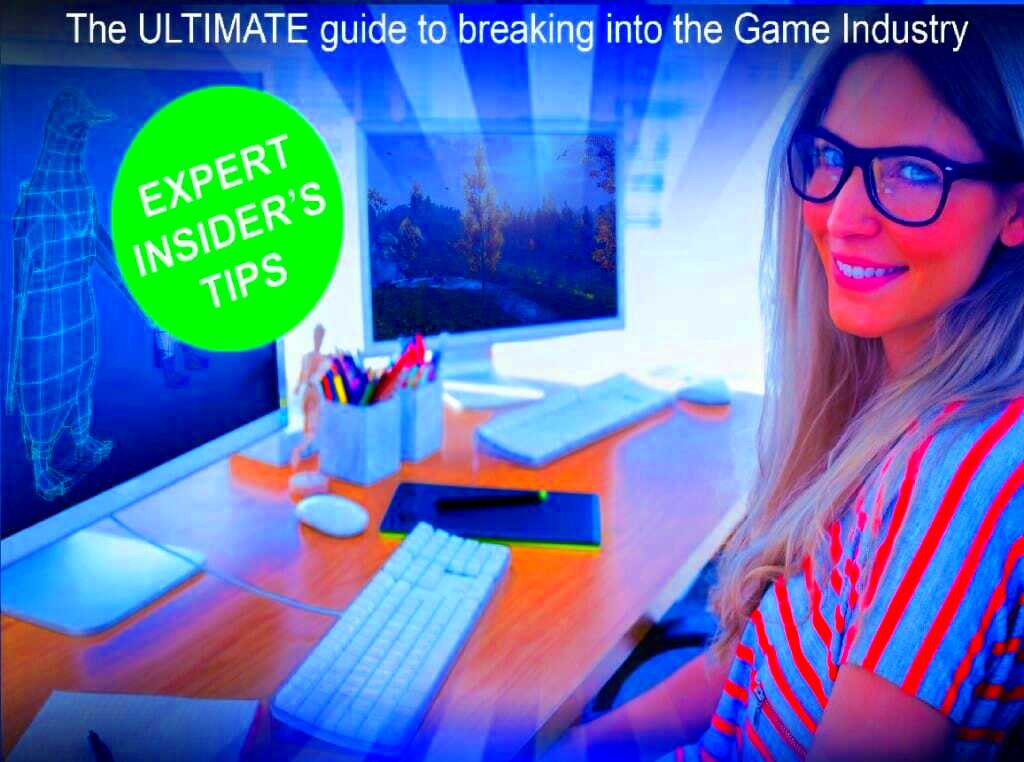Freelance game design is an exciting and creative career choice for those passionate about video games and design. As a freelance game designer, you get the flexibility to work on a variety of projects and collaborate with clients from around the world. Whether it's creating game mechanics, developing characters, or designing levels, this job allows you to bring your ideas to life while enjoying the freedom of working on your terms. But like any freelance job, it requires skills, networking, and marketing yourself effectively. In this guide, we will walk you through the essentials of becoming a successful freelance game designer.
Skills Needed to Become a Game Designer

To succeed as a freelance game designer, it's essential to develop a strong set of skills that can make you stand out in a competitive market. Here are the key skills you need:
- Creativity: Game design is all about coming up with fresh ideas and innovative gameplay mechanics. A creative mind helps in developing unique concepts that attract clients.
- Technical Knowledge: Familiarity with game engines like Unity or Unreal Engine is vital. Knowing how to integrate design with code can make you an even more valuable freelancer.
- Problem-Solving: Game designers often face challenges during development. Being able to solve problems efficiently is crucial in creating smooth and engaging gameplay experiences.
- Artistic Vision: While you don't have to be an artist, having an eye for visual design will help you create more appealing games.
- Communication Skills: As a freelancer, you’ll often work remotely with clients. Clear communication ensures that you understand their needs and expectations.
By developing these skills, you'll position yourself as a reliable and talented freelance game designer.
Also Read This: How Many Fiverr Accounts Can I Add to My Payoneer Account?
Setting Up Your Freelance Game Design Profile

Creating a strong freelance game design profile is key to attracting clients and securing projects. Here's how you can set up a profile that showcases your skills effectively:
- Choose the Right Platform: Start by selecting a freelancing platform like Fiverr, Upwork, or Behance. These platforms provide a large pool of potential clients looking for game designers.
- Craft an Impressive Bio: Your bio is your first chance to make a good impression. Be sure to highlight your experience, expertise, and passion for game design. Keep it concise but impactful.
- Showcase Your Portfolio: Include samples of your previous work to demonstrate your skills. This could be concept art, game prototypes, or finished projects. The more relevant your portfolio, the higher your chances of landing a gig.
- Set Clear Pricing: Make sure your rates are competitive and reflect your level of experience. Offering different packages can help attract a wider range of clients.
- Gather Testimonials: If you have worked with clients in the past, ask them for reviews or testimonials. Positive feedback can greatly improve your chances of being hired.
With a well-rounded profile, you'll be ready to start applying for freelance game design projects and building your reputation in the industry.
Also Read This: Is Fiverr Good for Freelancers – Complete Guide?
How to Create a Winning Game Design Portfolio

Your portfolio is your visual resume as a freelance game designer. It's essential for showcasing your talents, experience, and creativity to potential clients. A well-crafted portfolio can be the deciding factor in landing your next project. Here’s how to make yours stand out:
- Showcase a Range of Work: Display a variety of projects to show your versatility. This can include character designs, environment layouts, game mechanics, and level designs. The more diverse your portfolio, the more attractive you will be to a wide range of clients.
- Include Personal Projects: If you're just starting, personal projects are a great way to demonstrate your skills. Whether it's a game prototype or concept art, showcasing your own creations shows your passion and initiative.
- Provide Context: For each project, explain your role in the process. Did you design the levels? Develop the gameplay mechanics? Giving context helps potential clients understand your contributions.
- Highlight Achievements: If your game design work has been featured or received positive reviews, be sure to mention it. Client testimonials or awards can also boost your credibility.
- Keep It Updated: Continuously update your portfolio with new projects. An up-to-date portfolio reflects that you're actively engaged in the industry and improving your craft.
Remember, your portfolio should be easy to navigate and visually appealing. A great portfolio not only demonstrates your design skills but also your ability to present your work professionally.
Also Read This: How to Set Up Fiverr Direct Deposit
Marketing Your Game Design Services on Fiverr

Fiverr is an excellent platform for freelancers to connect with clients. To stand out on Fiverr, you need to effectively market your game design services. Here’s how to create a strong presence:
- Optimize Your Profile: Your Fiverr profile should clearly describe your services, experience, and specialties. Use relevant keywords like "game designer," "level design," or "game mechanics" so potential clients can easily find you.
- Create Clear and Attractive Gig Descriptions: Your gig description is where you explain exactly what you offer. Be specific about your services—whether it’s game concept creation, character design, or game testing. Highlight what sets you apart from others in the field.
- Offer Multiple Gig Packages: Fiverr allows you to create different pricing tiers for your services. Consider offering basic, standard, and premium packages to cater to various budgets and client needs.
- Include Relevant Samples: Upload high-quality images, videos, or prototypes of your previous work in your gigs. Visual examples are crucial for game design services, as they give clients a clear idea of what to expect.
- Engage with Potential Clients: Respond quickly to inquiries and maintain a professional tone. The quicker and more politely you respond, the more likely you are to gain trust and secure the project.
- Collect Positive Reviews: Always aim for positive feedback. Encourage satisfied clients to leave reviews, as good reviews increase your chances of being hired again and improve your Fiverr ranking.
Marketing yourself effectively on Fiverr can help you build a steady stream of clients, increase visibility, and grow your reputation as a reliable game designer.
Also Read This: How to Fund My Fiverr Account
Pricing Your Game Design Services Effectively
Pricing is one of the most important aspects of freelancing. Set your rates too high, and you may scare off potential clients; set them too low, and you may devalue your work. Finding the right balance is key. Here’s how to price your game design services effectively:
- Research Industry Standards: Start by researching what other freelance game designers are charging. Check platforms like Fiverr, Upwork, and Behance to get a sense of what the market rate is for different services. Pricing too low can hurt your reputation, while pricing too high might limit your client base.
- Consider Your Experience: If you're just starting, you may want to price your services slightly lower to attract your first clients. As you gain more experience and build your portfolio, you can increase your rates.
- Offer Tiered Pricing: Create multiple pricing packages for your services, such as basic, standard, and premium options. This allows clients to choose according to their budget while offering flexibility for you as a freelancer.
- Be Transparent: Always clearly define what’s included in each package. For example, a basic package might include a single character design, while a premium package could offer multiple characters or even entire game levels. Transparency helps build trust with clients.
- Factor in Your Time: Make sure your rates reflect the amount of time you’ll be spending on a project. Consider the complexity of the task and the time you will need to dedicate to deliver quality results.
- Adjust Prices Based on Demand: As you gain more clients and positive reviews, you may find that you can increase your rates. Periodically review and adjust your pricing to reflect your growing skillset and the value you offer.
Pricing your game design services effectively ensures that you’re compensated fairly for your work while remaining competitive in the freelancing market.
Also Read This: Where Can I Get Pictures for Fiverr?
Building Long-Term Relationships with Clients
As a freelance game designer, building long-term relationships with clients is essential for sustained success. It's not just about completing a single project; it’s about creating trust and maintaining a positive, ongoing working relationship. Here are some strategies to help you foster long-term connections with clients:
- Communicate Regularly: Keep clients informed throughout the project. Regular communication shows that you are dedicated and helps prevent misunderstandings. Send updates on your progress, ask for feedback, and be open to suggestions.
- Deliver Quality Work: Always aim to exceed client expectations. When clients are happy with the final product, they are more likely to return for future projects and recommend you to others.
- Be Professional and Reliable: Consistently meet deadlines and be available when your clients need you. Being dependable makes clients feel confident in your abilities and more likely to trust you with new tasks in the future.
- Offer Follow-Up Support: After a project is completed, check in with the client to see if they need any additional tweaks or updates. Offering post-project support can make clients feel valued and encourage repeat business.
- Build Rapport: Take the time to get to know your clients and build a personal connection. This doesn’t mean becoming overly familiar, but showing interest in their needs and goals can help solidify a long-term working relationship.
Building lasting relationships can lead to repeat business, referrals, and a strong reputation in the industry, all of which will help grow your freelance game design career.
Also Read This: Understanding the Character Limits of Your Fiverr URL
FAQ
Here are some frequently asked questions about becoming a freelance game designer:
- How do I find my first freelance game design job? You can start by joining freelancing platforms like Fiverr or Upwork. Build a strong profile, showcase your portfolio, and apply for entry-level jobs to gain experience.
- How much should I charge as a beginner? As a beginner, it’s a good idea to start with lower rates to attract your first clients. Once you gain experience and build your portfolio, you can gradually increase your prices.
- What kind of game design work can I expect to do? Game designers work on a variety of tasks, including creating game mechanics, designing levels, creating characters, and improving overall game flow. The specific tasks will depend on the client and project.
- Do I need to know coding to be a game designer? While coding is not always required for game design, having a basic understanding of it can give you an edge. Many game designers work closely with programmers to implement their designs, so it’s helpful to understand how the code integrates with your work.
- How do I handle multiple clients and projects? Managing multiple clients involves strong time management skills. Use tools like Trello, Asana, or Google Calendar to stay organized and ensure that you meet deadlines.
Conclusion
Becoming a freelance game designer is an exciting and rewarding career choice for those passionate about gaming and design. By developing the right skills, creating a strong portfolio, marketing yourself effectively on platforms like Fiverr, and setting competitive prices, you can attract clients and build a successful career. But success doesn’t stop there—building long-term relationships with clients, offering exceptional work, and maintaining professionalism will ensure your career grows. Remember, freelancing is all about consistency and reputation, so take the time to establish a solid foundation and watch your game design career thrive.




